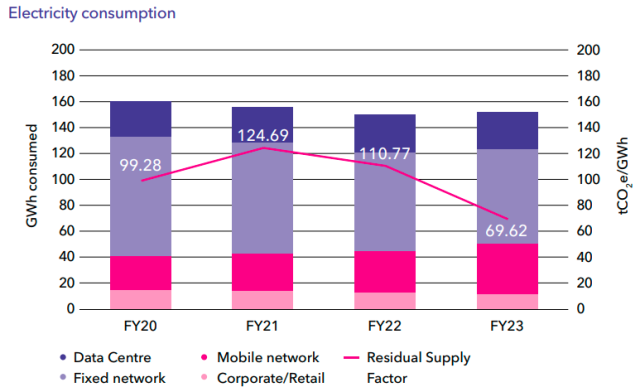Spark, a leading telecom operator in New Zealand, has made significant investment towards capital expenditure (Capex) during 2023 to enhance customer experience.

Spark’s capex has reached $515 million, representing 13.2 percent of its operating income in 2023, against $410 million in 2022.
Spark’s 5G network coverage using the C Band spectrum has reached 77 locations across the country as it added 5G coverage in 56 new locations in 2023. Spark’s Internet of Things connections surged 76 percent to 1.46 million at the end of 2023. digital health and Internet of Things collectively contributed $122 million of revenue during the year.
5G Standalone
Spark has allocated $250- $300 million for highgrowth data centre market and $40-$60 million into 5G Standalone.
Spark said IT systems investment of $116 million included lifecycle investment and licencing for internal IT systems, enhancements to support new products and deliver simple, intuitive customer experiences, development of deep customer insight functionality and expansion of enterprise systems capability.
Data centre spend of $114 million was primarily on the new facility at Takanini, with supporting investment into the Mayoral Drive facility.
Mobile network investment of $98 million included investment in Spark’s radio access and 5G deployment, increasing capacity and coverage for mobile and wireless broadband. It also included sustain and resilience investment in mobile core.
Investment of $93 million for fixed network and international cable capacity was to meet requirements for Spark’s fibre and transport network, continuation of core network expansion and resilience programme, advancement of exit strategy for the PSTN and international cable capacity purchases to meet forecasted demand for data.
Investment in the Radio Access Network (RAN) of $42 million was to support full 5G standalone (SA) capability as an enabler of future revenues from emerging technologies.
Spark’s electricity use
Spark said its electricity use has grown 1.8 percent to 152.6 GWh, driven by increased investment in 5G mobile networks and data centres.
Spark says electricity accounted for 79.8 percent of scope 1 and 2 emissions over the past year. The majority of its electricity use is in powering fixed networks, data centres, and mobile network.
Spark — in association with its network partner Samsung — piloted energy saving features at its Hagley Park East mobile site in Christchurch. These smart features switch the mobile site to lower power states at off-peak times.
The pilot showed a 20.7 percent reduction in power consumption in the remote radio unit, and an overall 10.6 percent reduction in electricity use at the site. Spark has now rolled out the feature to over 300 sites with the same capabilities nationwide.
Research firm GlobalData says 5G will drive mobile services revenue growth in New Zealand over 2024-2029. 5G subscriptions are expected to account for about 46 percent of the mobile subscriptions by the end of 2029 as operators accelerate their 5G rollouts.
The average data usage over mobile networks in New Zealand is forecast to increase from 7.6GB in 2024 to 13.7GB in 2029.
One New Zealand will lead the mobile services market in New Zealand in subscriptions through 2029, given its strong focus on 4G and 5G network developments, Hrushikesh Mahananda, Telecom Research Analyst at GlobalData, said.
Baburajan Kizhakedath
